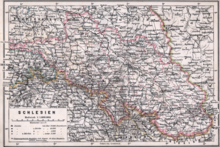Category:Stamps of Upper Silesia




The area of the then South-Prussian province Oberschlesien (French: Haute Silesie, English: Upper Silesia, Polish: Górny Sląsk, Czech: Horní Slezsko) was after the World War I according to the article 88 of the Treaty of Versailles (signed by Germany, 28 June 1919) occupated by Italian, French, and British military units under the command of an interallied commission in order to overtake the civil administration of this area and to supervise a plebiscite (popular referendum). The allied military units (ca. 13,000 – 22,000 soldiers) occupated on the 27th of January, 1920 the Upper-Silesian territory after serious political riots predated since emerged in spring 1919 that the then German “Ostmark” should be dissolved in favour of a new founded Poland.
According to the article 95 of this treaty should the expenses for the practice of this commission and their military units as well as for the preparation and the implementation of the referendum be defrayed by local revenues, and possible additional costs by the German state administration of Prussia. On order of the commission were for this aim, amongst others, printed and sold special postal stamps for the plebiscite area “Oberschlesien”. These were valid as solely permitted postage revenue stamps from the the 26th of Mai 1920 onwards.
The plebiscite took place at the 20th of March, 1921 with the result, that 59,6% of the population voted for a remaining to Germany. Nevertheless was Upper Silesia divided in a German and a Polish part according to the so-called “Sforza-line” by a decision of the “Interational Conference of Ambassadors” in Paris on the 20th of October, 1921.
These events and the following partition of Upper Silesia leaded, amongst others, to the resign of the then German government of Reich Chancellor Joseph Wirth.
Subcategories
This category has the following 4 subcategories, out of 4 total.